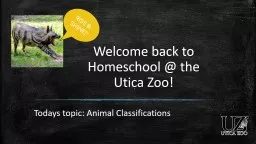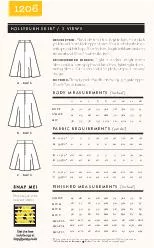PPT-Welcome back to Homeschool @ the
Author : giovanna-bartolotta | Published Date : 2019-12-20
Welcome back to Homeschool the Utica Zoo Todays topic Animal Classifications RISE amp SHINE What does classification mean When certain animals are grouped together
Presentation Embed Code
Download Presentation
Download Presentation The PPT/PDF document "Welcome back to Homeschool @ the" is the property of its rightful owner. Permission is granted to download and print the materials on this website for personal, non-commercial use only, and to display it on your personal computer provided you do not modify the materials and that you retain all copyright notices contained in the materials. By downloading content from our website, you accept the terms of this agreement.
Welcome back to Homeschool @ the: Transcript
Download Rules Of Document
"Welcome back to Homeschool @ the"The content belongs to its owner. You may download and print it for personal use, without modification, and keep all copyright notices. By downloading, you agree to these terms.
Related Documents












![[READ] Saxon Math Homeschool: 7/6 (Saxon Math 7/6 Homeschool)](https://thumbs.docslides.com/1007874/read-saxon-math-homeschool-7-6-saxon-math-7-6-homeschool.jpg)
![[DOWNLOAD] Homeschool Planner and Essential Organizer Faith Edition | Watercolor Foliage:](https://thumbs.docslides.com/1008145/download-homeschool-planner-and-essential-organizer-faith-edition-watercolor-foliage-undated-customizable-one-year-homeschool-planner-organizer-and-record-faith-edition-undated-homeschool-planners.jpg)
![[EBOOK] The Essential Homeschool 1st Grade Workbook: 135 Fun Curriculum-Based Exercises](https://thumbs.docslides.com/1008260/ebook-the-essential-homeschool-1st-grade-workbook-135-fun-curriculum-based-exercises-to-build-skills-in-reading-writing-and-math-homeschool-workbooks.jpg)